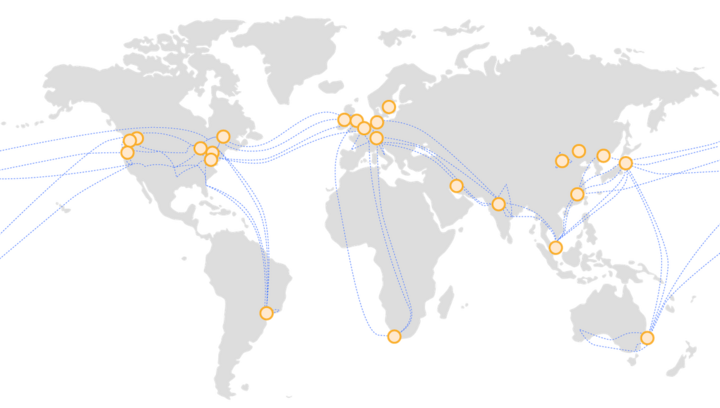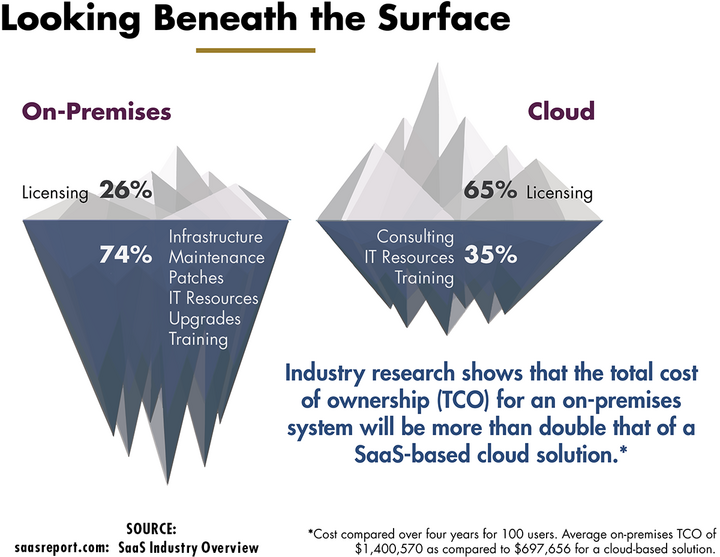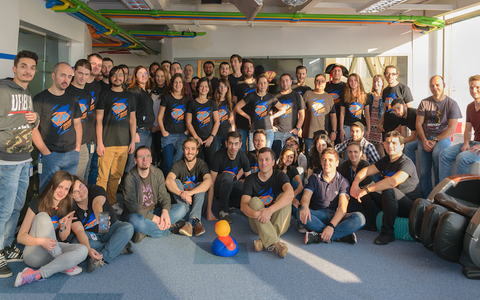In last few months we notice an increasing number of Enterprises migrating from an outdated Redmine on-premise to the cloud. We asked CTO’s and CIO’s who recently transitioned to the Cloud about the reasons and benefits of transition. .
People we interviewed shared the same 7 factors driving the swift of their infrastructure. We hope this article will help other teams who struggle with on-premises Redmine to find a solution. We aim to inspire your search for an alternative way to managing your IT.
The first and foremost factor is that the key decision makers and stakeholders involved in the decision process were aware that old systems with usually neglected maintenance holds the business growth down and causes a rising technical debt bubble.
Reason 1. To future-proof the system by solving Redmine updates problem

With a major release at least once a year and few minor along the way, it requires resources assignment to keep your Redmine and installed plugins up-to-date. Depending on the developer it can be up to 2-3 events per quarter.
Refreshed system and plugins tend to cause conflict with older plugins and functions. Especially since 4.0, because the core team has re-designed the part of core gems and functionalities. When businesses lift-and-shift Redmine to the cloud the primary point is that don't want to worry about the updates any longer. They want to forget about testing and solving conflicts, changing requirements, decreasing storage space, or lack of human resources.
By moving the platform to the cloud you can keep your entire company focused on delivering business goals, generating revenue and fostering relationships with your clients. Maintaining IT infrastructure is usually not your main objective.
One point was common – 7/10 people we spoke with, planned to install Redmine once and not to touch it until it’d be necessary. Sooner or later they faced a plugin/core conflicts or a need to add/upgrade the plugin or struggle with the internal operations.

And then they discovered that Redmine update – the same as previously Windows updates (Hello, blue screen, and unending installations!) is not as simple as it seems in theory. In practise, it usually requires you to re-install the system completely and migrate the files to a new instance. Such a process can take days, weeks or even months, depending on the size of your business.
As a primary developer of Redmine plugins, we can share a small secret – most of the plugins available in the plugin marketplace, especially the ones available for free are not tested at all or tested only in the server environment used by their development team. There's no unified system or automatic test coverage that’d check plugins compatibility as in the Jira marketplace.
The consequence can range from being unable to use the old features to a system downtime. And this can turn costly.
By choosing Redmine cloud hosting, you always work on the latest stable version of Redmine and plugins. Your instance provides on average 99.9% uptime or better and is contantly monitored.
Reason 2. To gain faster Redmine also from mobile

Another reason is the need of mobility and accessibility. The benefit of Redmine instanced hosted in the cloud is that they all use a responsive layout and can though be accessed on the go – on a business trip, or in commute. And can be easily connected with mobile apps. Thanks to this, the communication within the teams improve and team leaders have better visibility on the project progress.
RedmineUP and other serious hosting providers, let you choose where you want your data to be stored. The first common reason is the obedience of local data regulation (as in Europe, China, or Russia).

The second one is speed. The performance of cloud-hosted Redmine, supported by CDN, guarantees better performance than your in-house server.
You can read a case study of RSP Systems that shows how migration to the Cloud can boost the business productivity.
When you want to integrate Redmine with a third-party tool or service, you can follow a guidance of a team who's maintaining multiple Redmine instanced for 10 years already and knows the system as the back of their hand.
Migrate to secure hosting
Don't waste your time on Redmine maintenance. Hire experts and focus on your projects
Reason 3. To improve Redmine security and backup
An arguably the most engaging point in discussion with every CTO is which way of hosting Redmine is better – in-house or cloud-hosted. But as the saying goes, the shoemaker's son always goes barefoot also applies to IT teams. The audits and investments in the security of internal systems are often on the list of things to to, but are being pushed down when projects are in development phase.
If you compare your in-house infrastructure and hosted instances - you will see that nowadays, cloud providers such as EasyRedmine, Planio, and RedmineUP put data security and safety in the first place.

Each can provide certificates such as:
- PCI DSS Level 1
- ISO/IEC 27001:2013
- SOC 1 Type II and SOC 2 Type II
- Cloud Security Alliance (CSA) STAR self-assessment
If you work for a sensitive industry, such as banking, finances, or medicine, you have meet scrupulous regulations and data protection agreements (such as GDPR). Each mentioned Redmine Cloud providers meet those requirements and protect customers' data as if it was data of their family members. Have look at the RedmineUP's Security Statement for more details.
Reason 4. To choose cost-effective solution
If your business can have an all-in-one ready-to-use instance for the costs of 1h of the DevOps or admin, what sense make to go through all Redmine installation and maintenance by themselves? It’s a no-brainer.
The fact that is Redmine is available for free and won't cost you to own it is tempting at first. But consider the Total Costs of Ownership. For a self-hosted Redmine, your organisation would need to cover the costs of hardware (server and supporting infrastructure, internet, electricity, etc.) and labor. And the costs of labor grows as the business grows and requires more attention to support and maintain the system and acting as an administrator.
We ran a survey with our Cloud clients and asked them about the expenditures they were taking before the swift. On average, they spent between $600—$1000 on self-hosted Redmine per month. Cloud pricing provides you with transparency and easiness to plan the expenditures for future quarters.

With Redmine in a SaaS model, such as RedmineUP Cloud, you pay a fixed monthly subscription fee, on a pay-as-you-go basis according to clear and transparent pricing. That’s pointed out as decisive ball in a match.
On a real examples – an average IT team had a headcount of 20-40 people. It will fall into a Medium plan, which costs $69/month. That's a way less than the costs of running Redmine in-house.
Another example. Let's imagine that your internal team have just five people aboard and decide to swift to the cloud-hosted version to free of few hours. After the migration (delivered free of charge), your monthly fee will be $29. Now let's imagine that because of the new project, you need to bring few external teams and subcontractors aboad. This can scale the user count up to 50-100 people. Then for the time of the project, your plan increases – to $169. It's still way less you'd spent on just system administration, support, and conflict solving for such a big group. And once the project finishes, you can downgrade and decrease the cost. It's a real no-brainer.
Migrate to secure hosting
Don't waste your time on Redmine maintenance. Hire experts and focus on your projects
Reason 5. To access support and dedicated account manager
Despite the commercial solutions Redmine doesn't have a 24/7/365 open support channel.
In the case of roadblock, error, or uncertainty, you have to count on help from your devops, development team or Redmine community. If you can afford to wait for a response, that’s often enough. But when downtime occurs and you're blocked in work for your clients, it's getting problematic.

Directors we interviewed mentioned that they wanted to have a dedicated team who’d monitor the status of application, keep an eye on load balancer and in case of urgency be there to react and solve the problem fast. They mentioned that they wanted to be have access to a dedicated account manager who would be familiar with their instance configuration. Another reason – to able to reach out to support by multiple channels, usually by e-mail, LiveChat, or call.
We received a five-star rating for the transition service from on-premise to cloud-hosted Redmine that we provide free of charge and usually deliver within a business day.
George Baker, BI Analyst
G-Loot We needed to migrate our locally hosted instance of Redmine to the cloud to integrate into our internal tech stack better. Once that became a reality the advantages of using the services of RedmineUP over managing the environment ourselves is immediately apparent. RedmineUP now manages all the administrative tasks like security and backup to leave our internal resources available to concentrate on other more business critical actions.
Reason 6. To build independent and flexible IT infrastructure
By choosing Redmine in a SaaS model has one more advantage over in-house hosting or dedicated software solution. It is flexibility and independence. Your data can be exported and imported to a new provider if the current one doesn't support your business goals enough.
If DevOps or development team need to add a new plugin, or connect via API with a third-party service won't need to delegate people for that assignment. The provider’s maintenance team deliver such customization or configuration.
Cloud computing is a solution that let your company focus on the core activity, while the rest is handled for you. It's the same business service you know from car fleet leasing. Cover the monthly subscription and stop thinking about the rest.
Migrate to secure hosting
Don't waste your time on Redmine maintenance. Hire experts and focus on your projects
Reason 7. To get ready to use Redmine without deployment
The last common mentioned reason is that cloud-based services can be deployed within just an hour or a few business days rather than weeks or months it can take to plan strategically, get approval, buy, and implement internal IT infrastructure with internal personnel.

The CTO of our client, a software house from Germany choose Cloud because he needed to add leased developers to the project. He opened an account in a minute, checked the new Agile project management features and upgraded account to the smallest plan. And the devs joined the project the next hour. He didn’t need to plan and book his people for the job. That’s a speed in making smart decisions.
An additional benefit of choosing a dedicated Redmine hosting and often reason of migration is a set of plugins. Businesses that cares for their deliverables are constantly looking for a ways to boost the performance of their team.
Each Redmine hosting provider offers a slightly different set of features. RedmineUP is rated best for project management and helpdesk related features, Planio uses a limited set of RedmineUP's plugin and has a friendly interface, EasyRedmine suits well teams who need to control and report on many KPI's.
Summary
Redmine is the most popular and highly functional open-source system, but it doesn't come with all features out of the box. Its maintenance requires time and resources. By moving Redmine to cloud hosting, businesses benefits from steamed up operations, optimised costs and future-proofing core tool.
If your on-premise setup or other Redmine hosting is holding your business growth, don't wait too long and consider lift-and-shift to a dedicated solution. The next step is to consider what's the best Redmine hosting that matches your business needs.
If any of reasons shared above resonate with you, take a first step and try Cloud for 15-days free.
What other reasons you see in your organization, that drives the desire to migrate to cloud? Share in the comments below.


